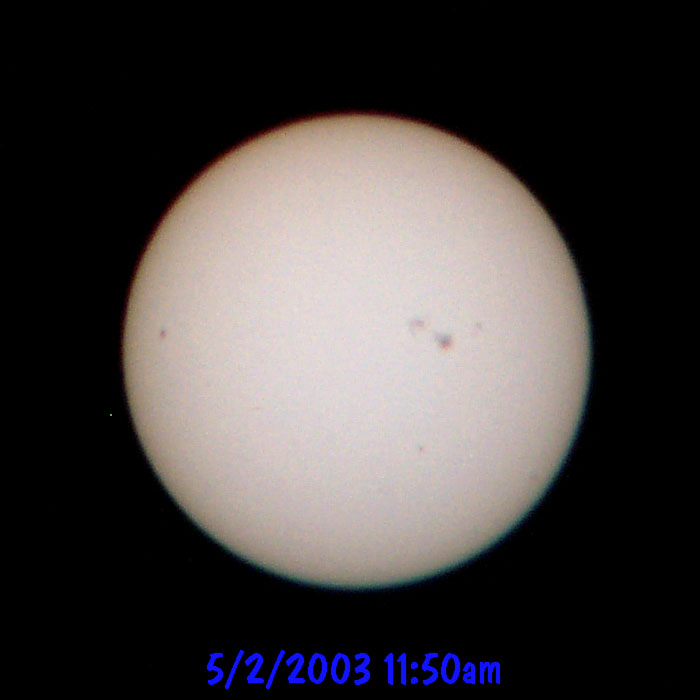
Binocular Photography!
Shown below, holes were cut in a computer scanner box (19" tall) for a pair of 10x Bausch & Lomb binoculars, and a Kodak DC290 digital camera; a sheet of HP premium printer paper was affixed to the bottom of the box, coated side up. To the right of the binoculars is affixed a true-sized DC290 self-portrait, made by photographing the camera in a mirror (hence the photo is a mirror image!). In addition to the large hole for the camera lens, holes were cut for the focusing sensor, the flash (which makes a red flash to set the focus, in some modes), and light & flash sensors.

Below is a FireWire webcam photo (captured with Surveyor Corp's Webcam32) of the gadget with the DC290 mounted (a lens cap covers the far binocular lens):

And here's a photo of the sun, taken with this setup. The camera was set to produce uncompressed images, at an exposure setting of 1/325 of a second (the fastest that the camera is capable of- a longer exposure might have been better), zoomed to its maximum 3x, and (I think) with a fixed focus of 18" (the bright spot to the left of the sun is probably due to light leaking in from somewhere). Acquiring the sun's image was relatively easy, by simply observing the shadow cast by the binoculars.

The DC290 has a "burst mode" that allows it to take up to 3 photos per second, until its flash memory has been gobbled up. With luck, I therefore might be able to capture 2 silhouettes of the space station crossing the sun's disk.
A transit of Mercury across the Sun's disk will occur May 7- the tail end of
it may be visible just after sunrise in the eastern U.S. - aa.usno.navy.mil/data
& aa.usno.navy.mil/data/docs/Merc_transit03.pdf